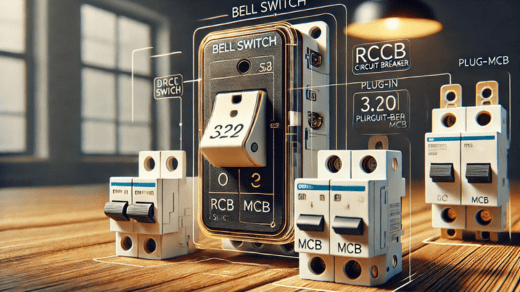RCCBs (Residual Current Circuit Breakers) detect and terminate circuits if a leak or fault current occurs. Wiring and appliance malfunctions can cause electric shock and fires, but this device prevents them. An RCCB pauses the circuit to avoid dangers by sensing incoming-outgoing current differences. Its fast responsiveness to tiny leakage currents makes it vital in residential, commercial, and industrial settings. Get connected with Eshop for an affordable bell switch pricein your budget. Here are some essential RCCB installation guidelines for homes and businesses.
Installation preparation
Before installing, make sure you have all the tools and are ready:
- Tools: A screwdriver (typically Phillips or flathead, depending on the screws), wire strippers or cutters, a voltage tester, and sometimes a mounting drill.
- Power off: Safety first. Find the RCCB line in your main electrical panel. Make sure the wires are dead with a voltage tester after turning off this circuit.
- Choose an appropriate place for the RCCB in the energy distribution board or consumer unit. It should be near the primary power source for simple maintenance and operation.
Setting up the RCCB and plug-in MCB
After pre-installation, install the RCCB and MCB:
- Installing the RCCB: Secure it to the DIN rail in the distribution board or consumer unit. An excellent electrical link requires appropriate alignment with busbars and other equipment.
- Always follow manufacturer wire connection instructions. For incoming and outgoing electricity, the RCCB usually has Line (L), Neutral (N), and Earth (E) connections. Attach electricity lines to terminals using the correct color codes. Use red or brown for Line and blue or black for Neutral.
- Plug-in MCB: Place it on the DIN rail adjacent to the RCCB. Plug-in MCB safeguard distribution board or consumer unit circuits. Please put it in the rail’s indicated slot and click it in. Connect the circuit’s wires to the MCB.
Trying and Making Sure
After physical installation, test and validate the RCCB:
- Functional Test: Restart the circuit with the main breaker. Press the test button and make sure the RCCB trips and cuts power to simulate a malfunction.
- Use a dedicated RCCB tester or voltmeter to assess RCCB sensitivity to residual current. Set it to trip at the residual current level (e.g., 30mA) to prevent electric shocks.
- Wiring Verification: Check all connections and wire ends twice to ensure safety. Check the RCCB for damage, burning, or loose connections that might compromise performance.
Conclusion
Installing an RCCB with a Plug in mcb improves residential and business power safety. Following the installation instructions—ensuring everything is ready, putting and wiring the RCCB correctly, and testing it—will protect you against residual currents and electric shocks. Regular testing and service keep the RCCB and accompanying MCBs operating correctly, providing you peace of mind and ensuring electrical safety. Follow the Eshop’s manufacturer’s instructions and consult their licensed electrician before performing complex installations to ensure safety and compliance with local laws.To know more, please visit this website.

